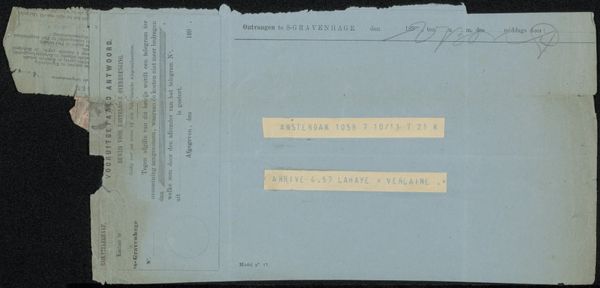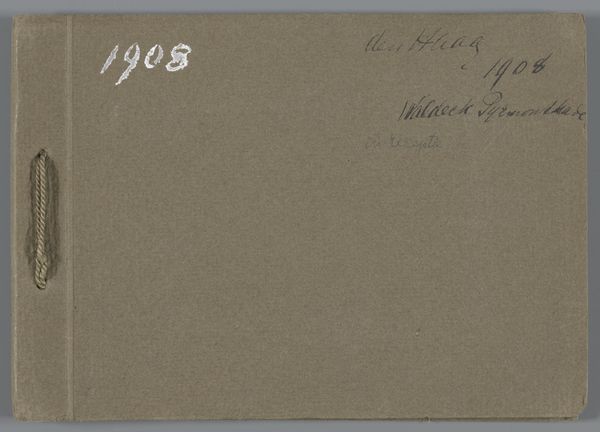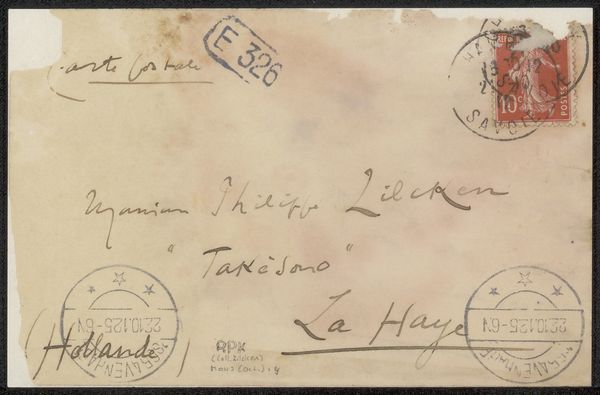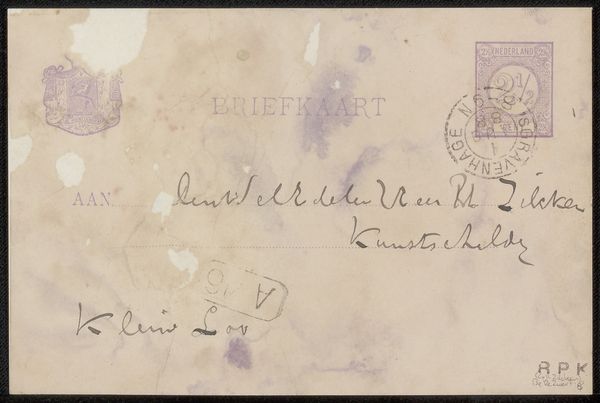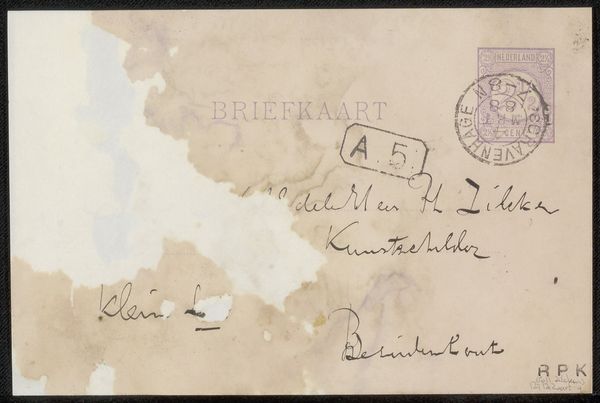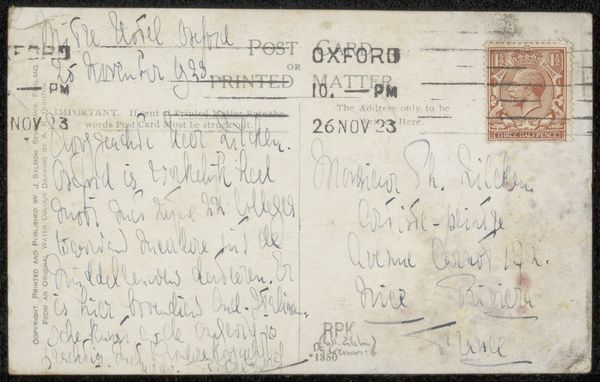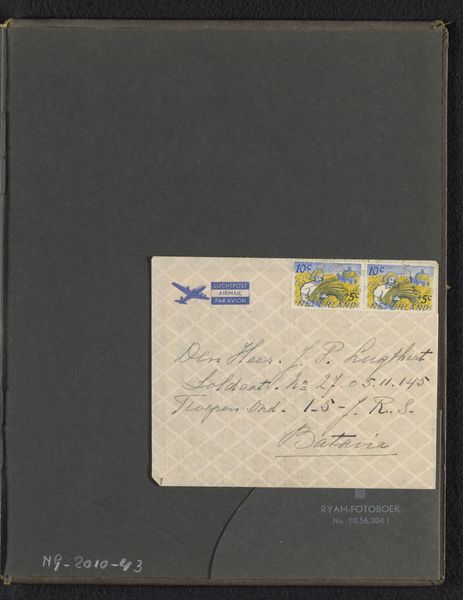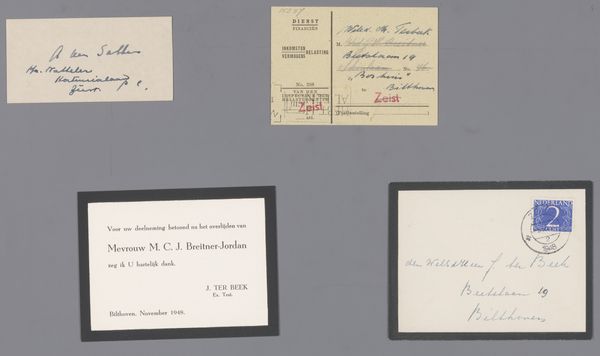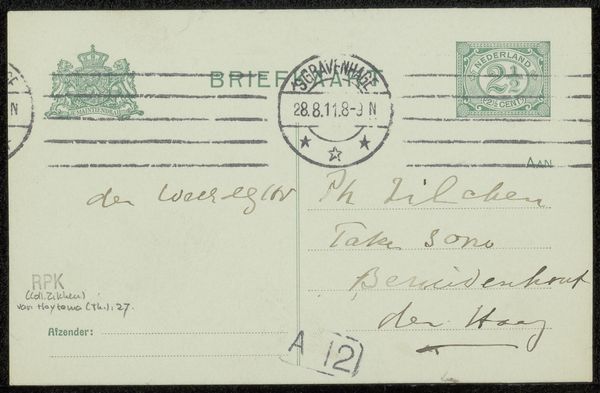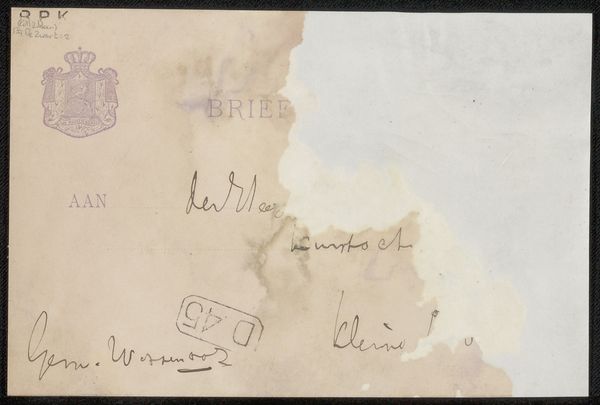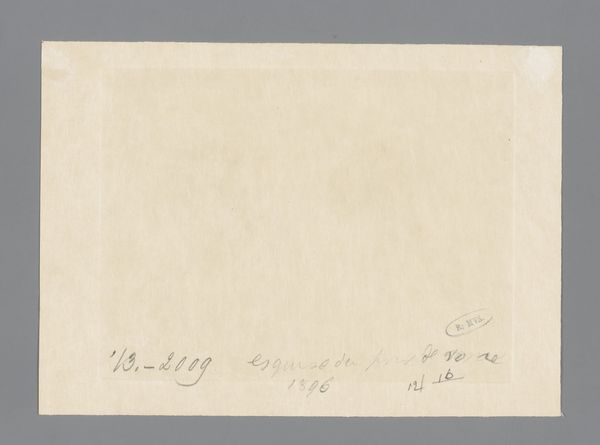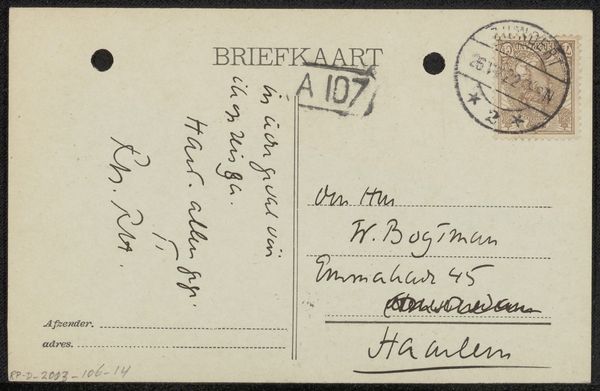
drawing, paper, ink
script typeface
drawing
old-fashioned
script typography
conceptual-art
hand-lettering
yellowing background
branded good
old engraving style
old fashioned
paper
text
ink
golden font
mail-art
historical font
Copyright: Robert Filliou,Fair Use
Curator: Looking at Robert Filliou’s "Karte," an undated ink and paper drawing, one is immediately struck by the delicate imperfection, don't you think? It's a postcard that feels incomplete, with torn edges and… circular voids. Editor: "Incomplete" feels right, yes, but that's where the intrigue lies for me. Given Filliou’s context – a Fluxus artist engaging with questions of permanence and authorship – I immediately interpret the defacement as intentional. It evokes a feeling of anti-establishment resistance, refusing traditional artistic boundaries. Curator: I agree, though consider also the purely visual interplay at play. The artist’s use of an apparently aged postcard format combined with script typography and distinct circular deletions results in the creation of an image which recalls something archaic but at the same time radically new. It’s reminiscent of mail art—an intriguing blend of personal communication and artistic gesture, defying simple categorization. Editor: Precisely, mail art allows the artwork to enter the everyday, bypassing traditional gallery spaces. The act of mailing inherently democratizes the artwork. The hand-lettering, coupled with the almost bureaucratic-looking stamp declaring “Principe d’equivalence creation permanente,” hints at the artist’s skepticism toward established systems of evaluation. He is quite literally, cancelling the premise. Curator: Fascinating interpretation! But note also that Filliou seems conscious of the pictorial plane itself. He deliberately punctures it, playing with positive and negative space in a way that brings depth and, daresay, tension, into what would otherwise be a plain rectangle. These voids function as apertures framing unseen realms. Editor: It speaks to Filliou’s wider exploration of chance, contingency, and collectivity as a radical means of engaging in the creative process and social critiques. These actions render it a powerful reminder that art need not exist only within the pristine walls of institutions; art happens everywhere, particularly through dialogue and exchange. Curator: I see now that examining his deliberate acts of removal adds significant complexity, forcing a fresh consideration. Editor: Precisely, that’s its lasting influence.
Comments
No comments
Be the first to comment and join the conversation on the ultimate creative platform.
